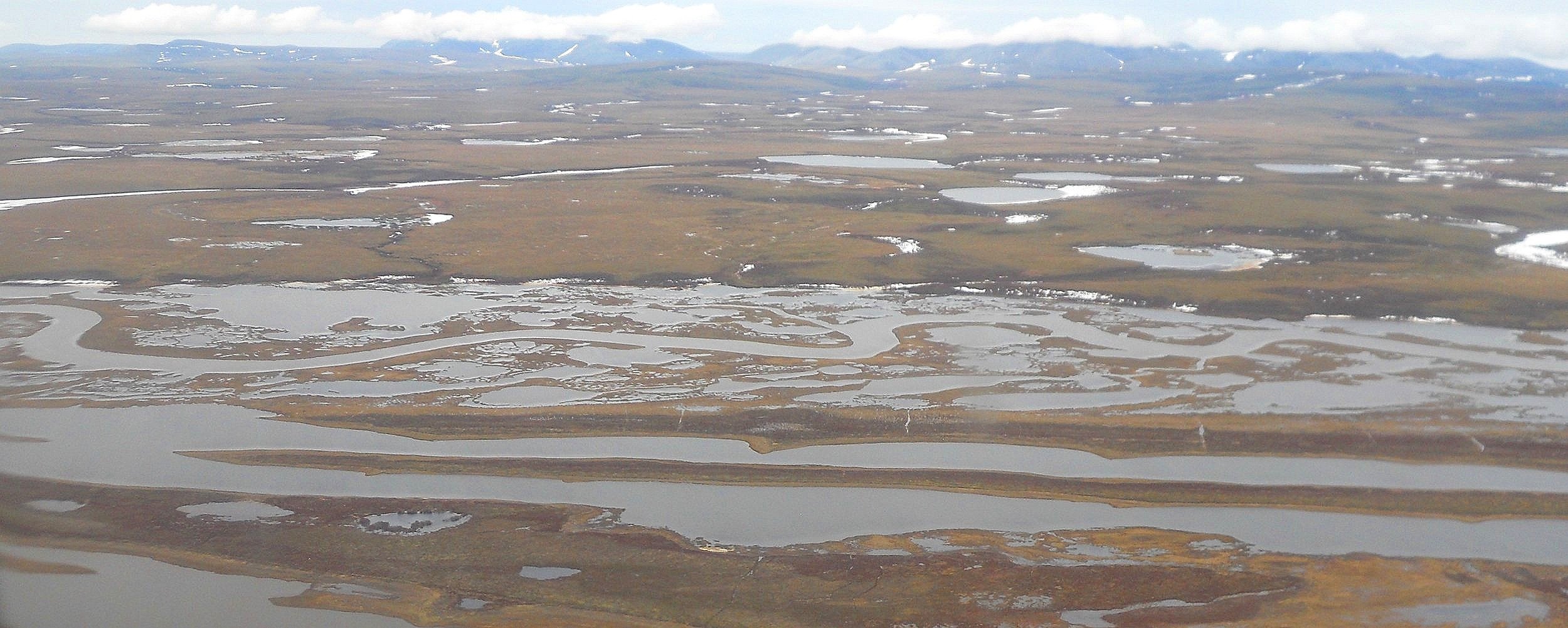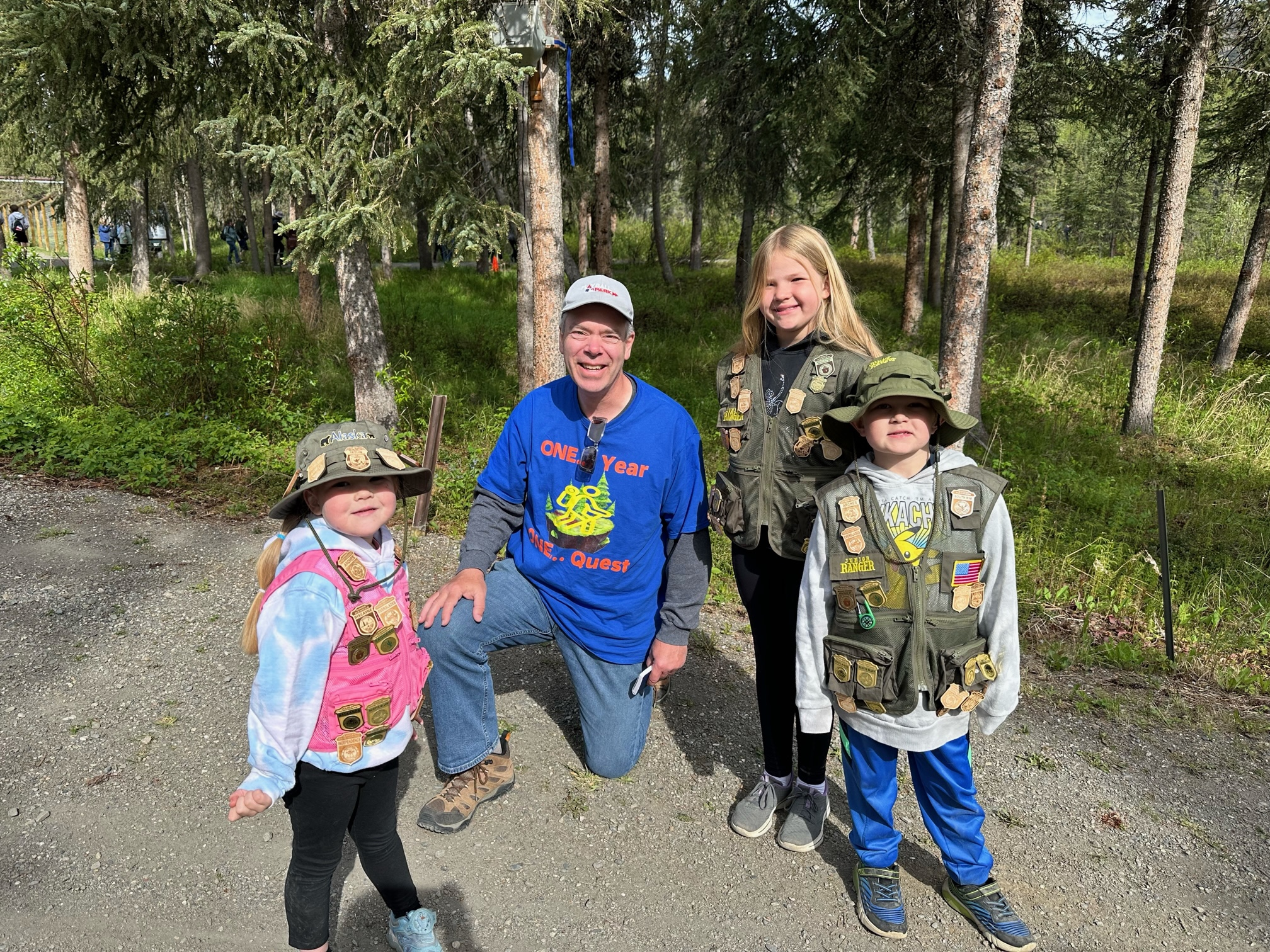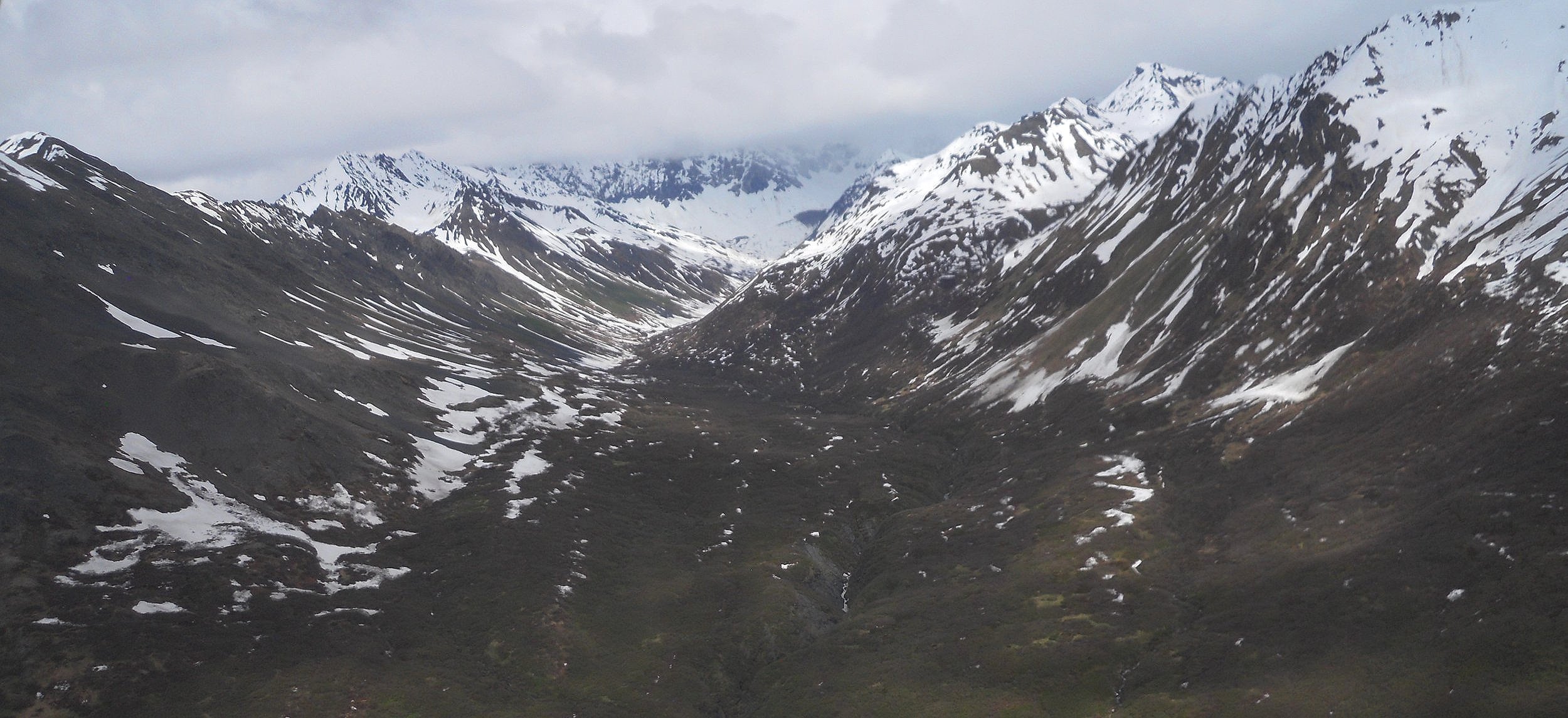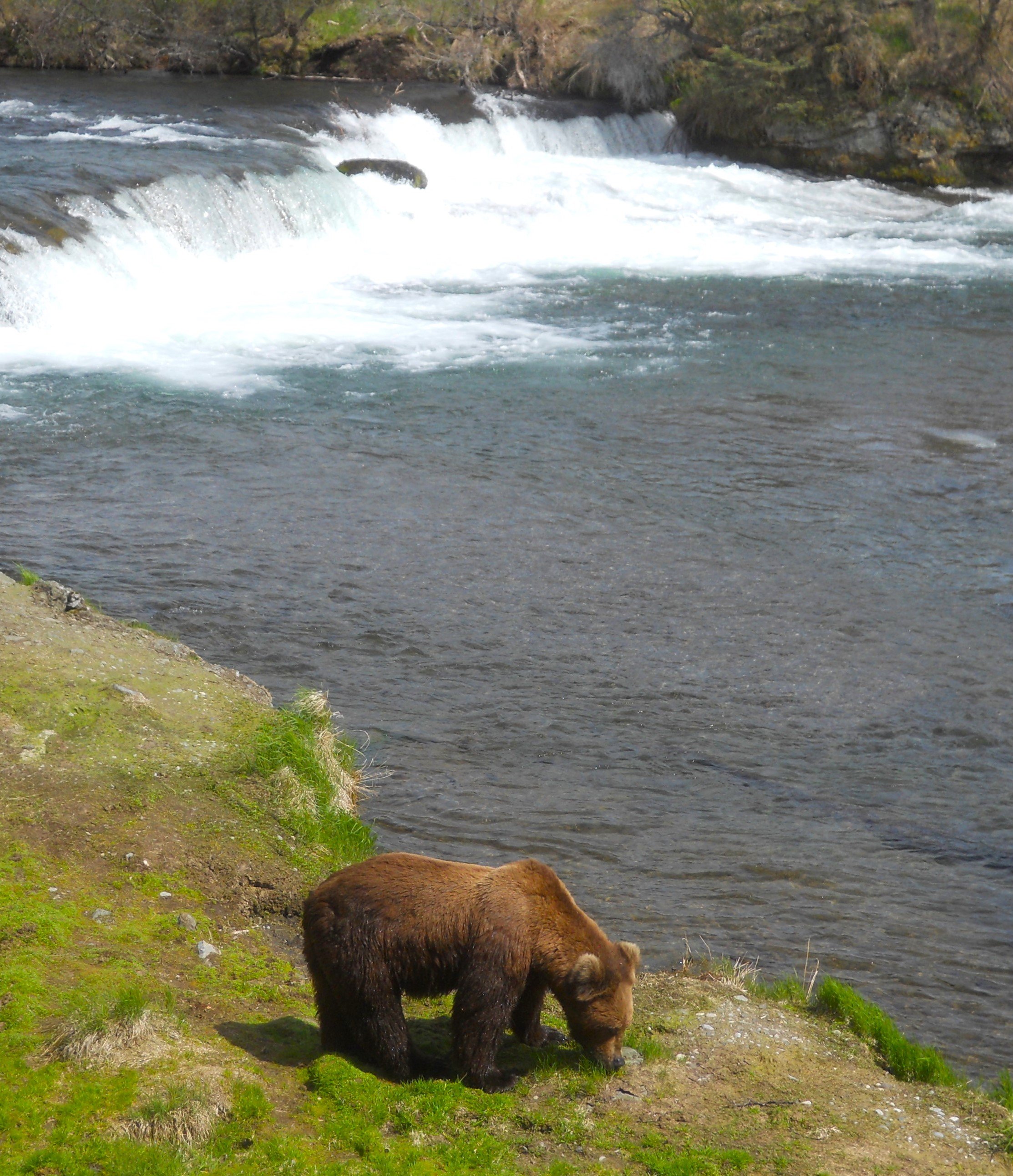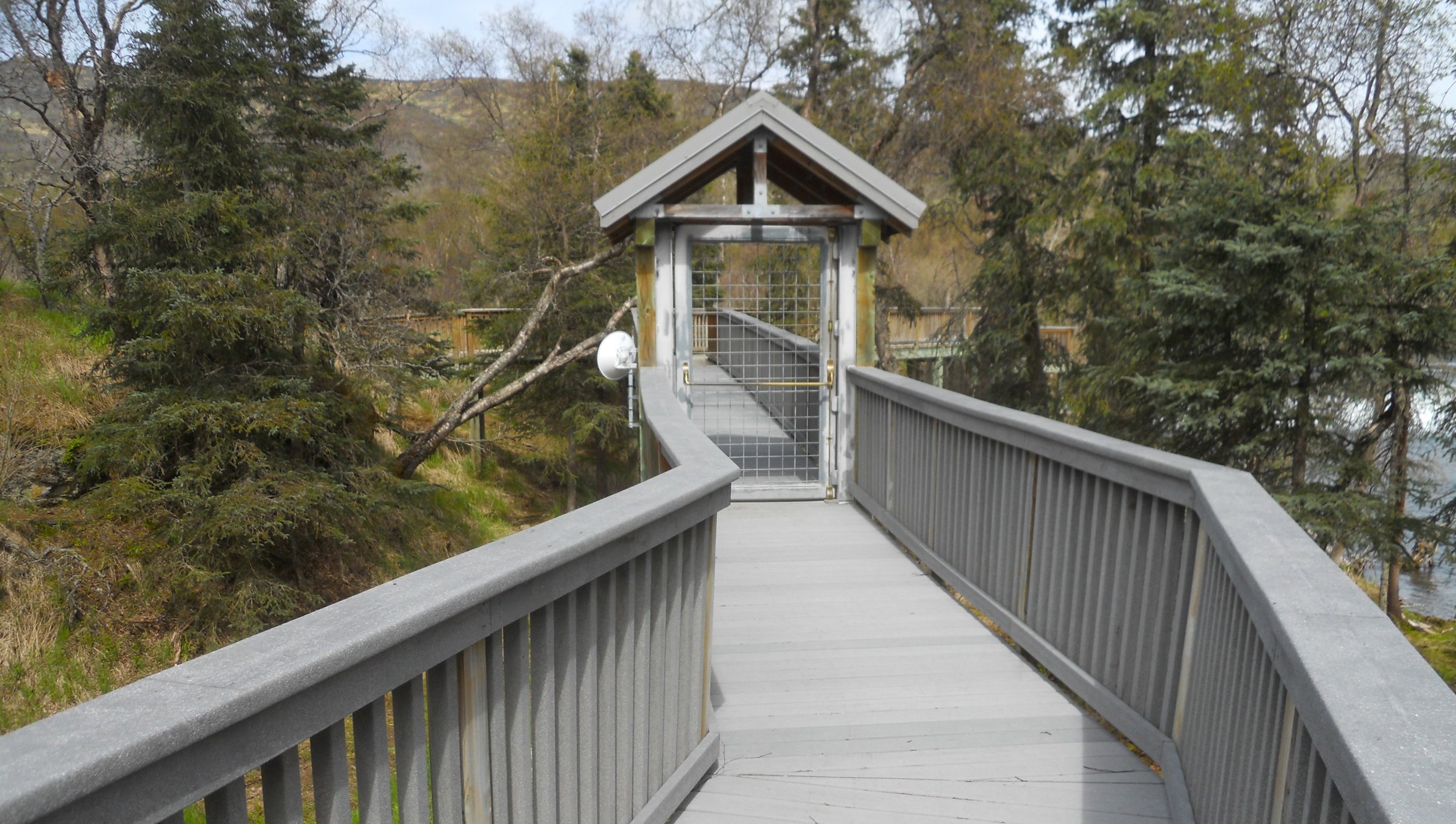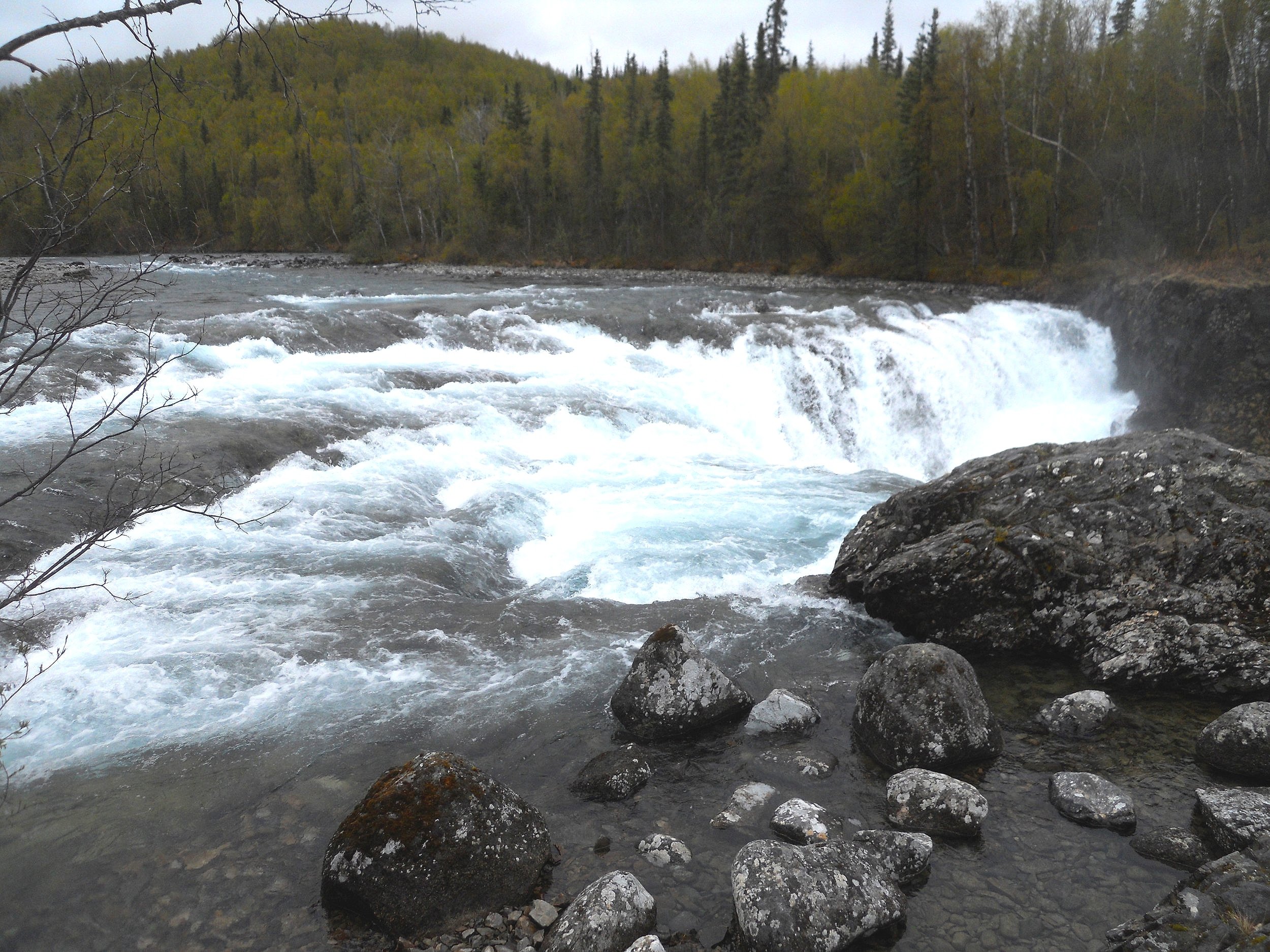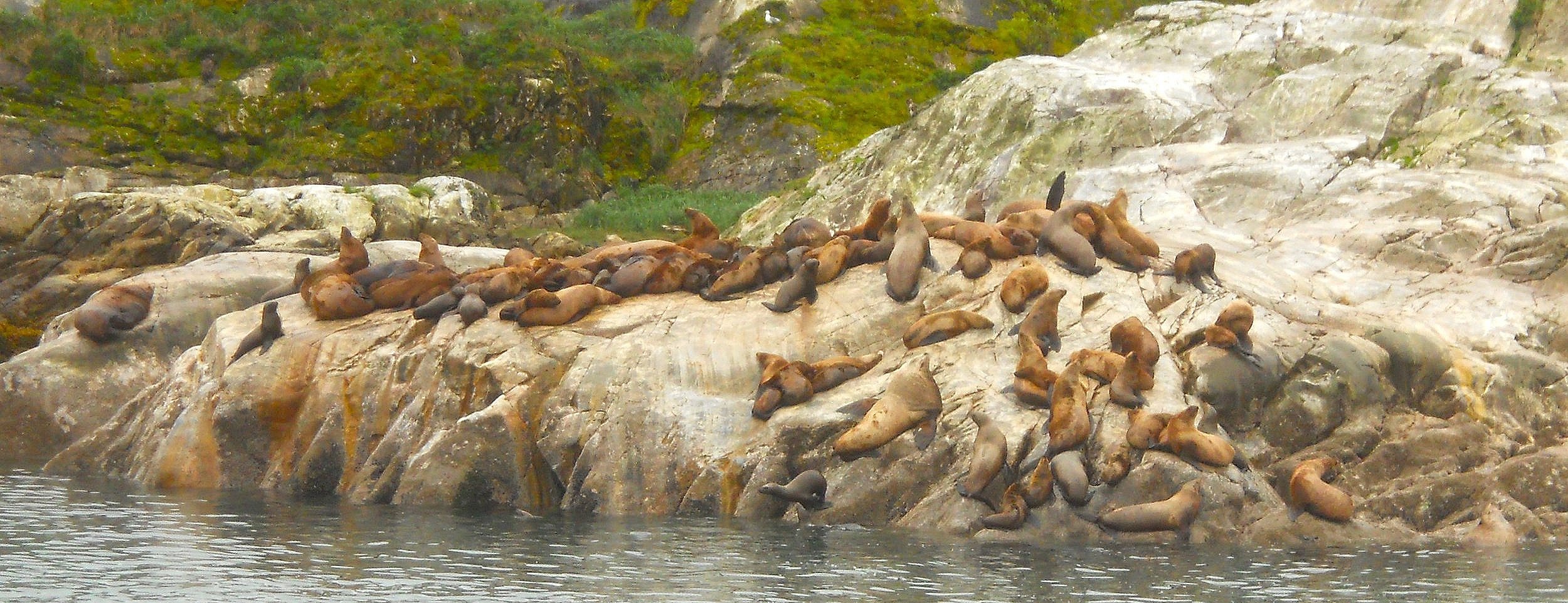DAY 18 (July 30) - Glacier Bay National Preserve does not look changed from my visit eight years ago. It continues to be just 91 square miles, compared to 5,131 square miles for the Park portion. Remember, the entire area used to be just Glacier Bay National Monument, but politics and special interests got in the way, creating two legal entities: a park and a preserve. On the Alaska Air flight to Yakutat (from Juneau) we flew over the main attraction of Glacier Bay National Park, the end of Tarr Inlet where everyone stops to see the Grand Pacific Glacier and Margerie Glaciers calve (there was one big cruise ship this morning… very hard to see in the photo). Plenty of glaciers, snow, and ice fields in the park. The runway at Dry Bay is still narrow, made of grass and a little gravel, carved from an evergreen forest. Water is running in the Alsek River (photo), with salmon easily seen from overhead. This trip was via helicopter, my first travel on such a piece of equipment. Hans, the pilot (and co-owner of Coastal Air Service), pointed out a female moose resting on a large swath of grass. A few large white birds were along the riverbank. Then there were the three outdoorsmen, plus gear, at the Dry Bay air strip waiting for a ride back to civilization. We could see 18,008’ tall Mount St. Elias, in Wrangell – St. Elias National Park, off in the northeast distance. Hans and Tanya now have a snazzy looking Otter plane. It must be the best-looking aircraft in southern Alaska. But no need to take that for one person out to the Preserve. Hopefully the below image will give you some idea of where the SE Alaska parks are located relative to one another, between Juneau, Yakutat, and Sitka (all reached via Alaska Air).

























